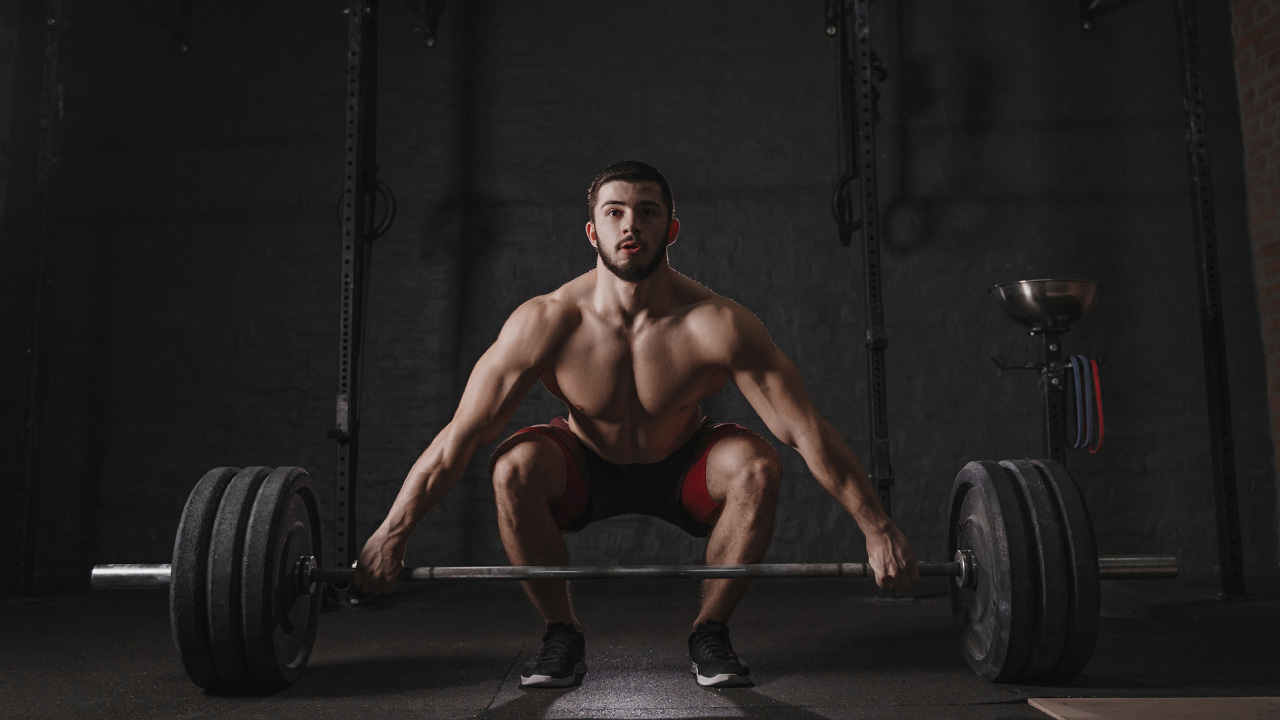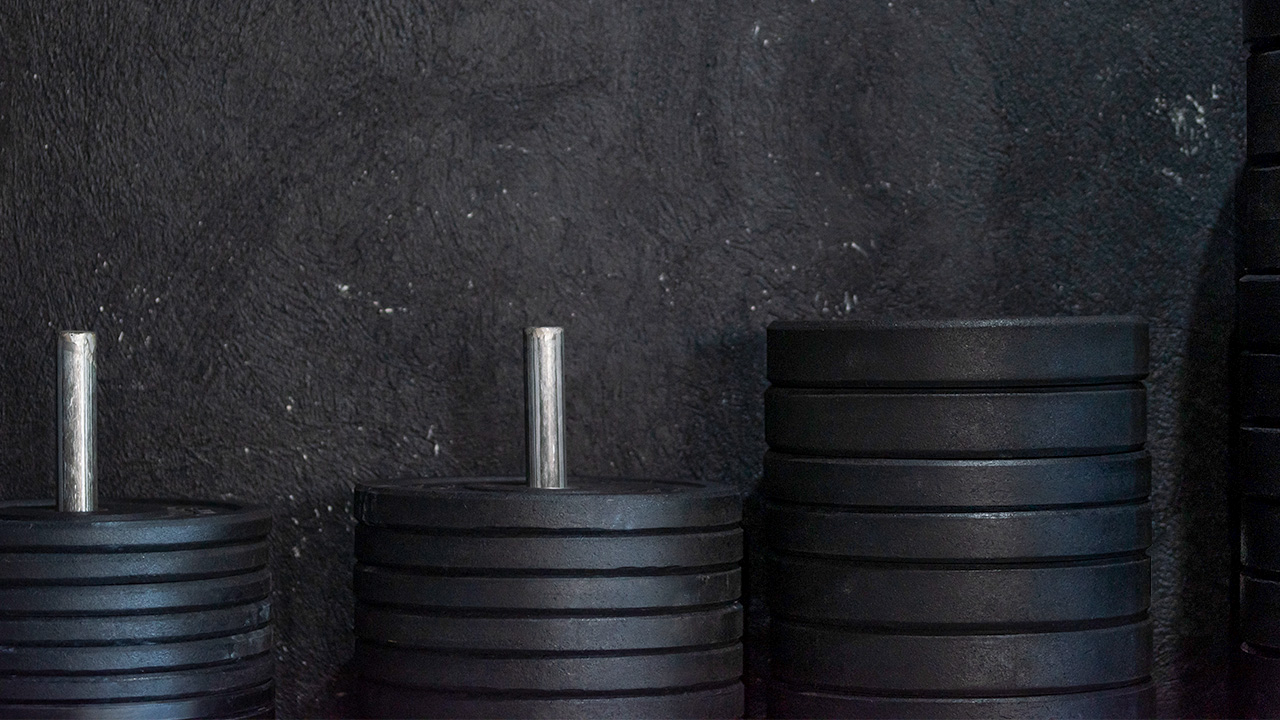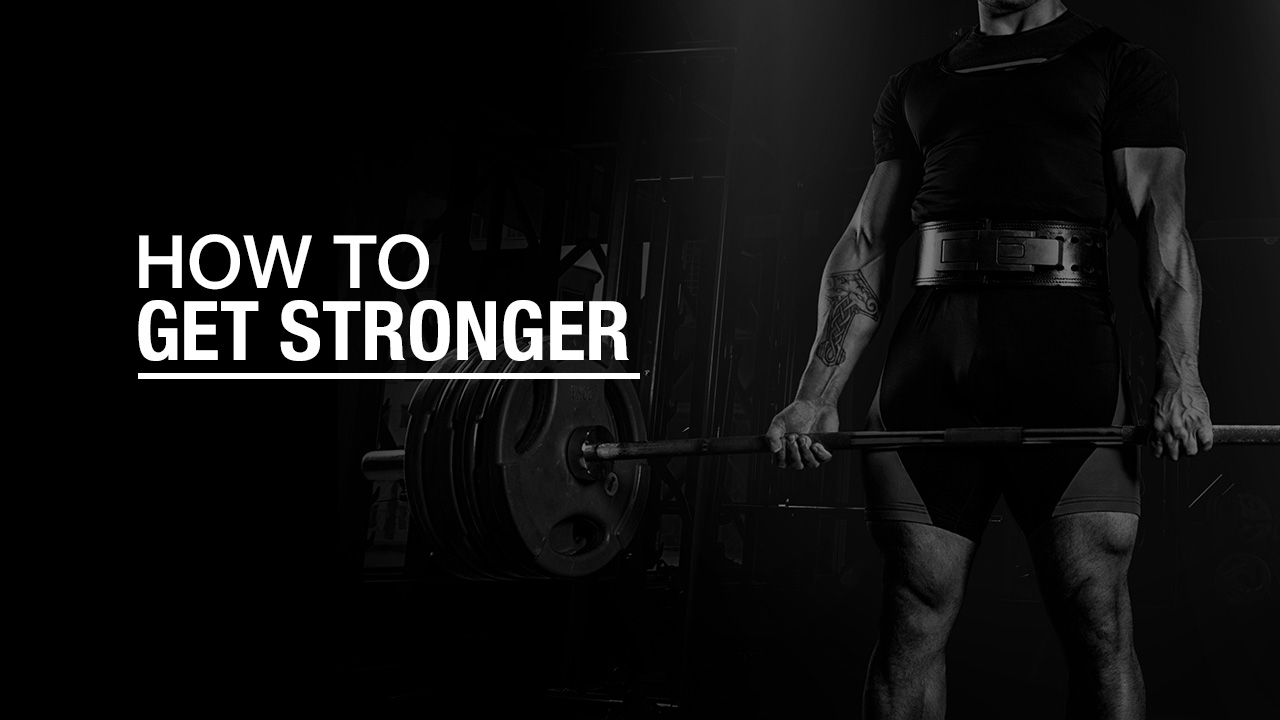
GET STRONGER FASTER
You’re in pursuit of strength—and fast, right?
I’m going to tell you exactly how to do that but let me warn you: while the approach is simple, it’s not easy.
Real strength gains require hard work, and there’s no shortcut around that.
But here’s the good news:
If you focus on the two most important factors—compound exercises and progressive overload, you can make serious gains in strength in just a matter of 4-8 weeks.
Compound movements like squats and deadlifts activate multiple muscles.
The effects of strength training will have you lifting heavier loads and building strength over time – shorter periods of time than if you use isolation movements.
And when you progressively increase the weight, you’ll maximize your muscle mass, increase core strength, and see continuous improvement without the risk of injury.
So, if you’re ready to work, let’s break down the exact steps to get you stronger, faster.
STEP ONE: SELECT COMPOUND MOVEMENTS
If you want a big boost in strength, you need to focus on compound exercises. Why?
Because these deliberate movements recruit multiple muscle groups at once, creating synergy in your consistent workout routine.
Whether it’s the Bench Press, Squat, or Deadlift, these lifts allow you to train multiple muscles together, which is how real strength is built.
For example, during the Bench Press, your triceps, chest, and shoulders are working together to push that weight.
This collaboration between muscle groups means you can load these exercises heavier and make strength gains much faster than you would with isolation exercises.
COMPOUND MOVEMENTS BUILD ATHLETICISM
Here’s the fact: athletic movements require your body to work as a unit. That’s why compound exercises are so effective—they don’t focus on the isometric muscle strength of a single type of muscle tone.
Instead, they train your body to work in sync, just like it does during any athletic activity.
These movements lay the foundation for strength resistance training and overall athleticism.
And let’s face it, being able to lift heavy weights is great, but being strong and athletic is even better.
WHY ISOLATION EXERCISES AREN’T ENOUGH
Don’t get me wrong, there’s a time and place for isolation exercises, but when your goal is to get stronger muscles in the shortest time possible, they won’t cut it.
Exercise guidelines for isolation movements target individual muscles, while compound movements train multiple muscles in one shot.
Over time, as you become more advanced, you can start to fine-tune with isolation movements, but for now, stick to the basics.
AVOIDING IMBALANCES AND INJURY
One thing to watch out for is training only in one plane of motion.
If all you ever do are squats, deadlifts, and bench presses, you’re building strength, but you’re also creating potential imbalances.
Life—not to mention, most physical activities and sports—don’t happen in a straight line.
You need to train your body in all planes of motion—sagittal, frontal, and transverse—to avoid injury and improve overall athletic ability level.
That means incorporating lateral movements, rotational exercises, and even some boring but necessary corrective exercises like rotator cuff work.
KEY COMPOUND MOVEMENTS YOU SHOULD FOCUS ON
If you want to get stronger, faster, and build a more balanced body, you need to prioritize compound movements.
Below, we break down the key types of compound movements, their importance, and examples for each.
PUSHING MOVEMENTS
Pushing movements are essential for developing upper body strength.
These pushing movements allow you to train multiple muscles simultaneously, increasing your capacity to lift heavier weights and improve your strength gains over time.
Proper form is critical here to avoid injury, especially when pushing heavier loads.
They can be divided into two main categories: vertical pushing and horizontal pushing.
Vertical Push (Overhead Press): The Overhead Press is a classic example of vertical pushing. This movement engages the shoulders, triceps, and upper chest while also requiring stabilization from the core and lower body. Other examples include the Push Press and Handstand Push-Up.
Horizontal Push (Bench Press): The Bench Press – one of the most famous chest exercises – targets the chest, shoulders, and triceps, making it one of the most effective exercises for upper body strength. The movement involves pressing the weight away from your chest while maintaining proper form. Exercise variations like the Incline Bench Press or Push-Up also fall into this category.
PULLING MOVEMENTS
Pulling movements are the key to developing a strong back, biceps, and posterior chain.
Like pushing movements, back-training lifts can be divided into two categories: rows and vertical pulls.
Focusing on both types of pulling movements ensures that you’re developing a balanced upper body and avoiding muscle imbalances that can lead to fatigue and increased risk of injury.
Rows (Barbell Row, Dumbbell Row): Rows are a foundational source for back development. The Barbell Row targets the upper and mid-back, lats, rhomboids, and biceps. Other variations like the Dumbbell Row or T-Bar Row engage similar muscle groups while allowing for slight changes in angles, providing consistent exercise variety to prevent plateaus.
Vertical Pulls (Pull-Ups, Lat Pulldowns): Vertical pulls like the Pull-Up are one of the best challenging exercises for building back strength and size. Pull-ups activate the lats, biceps, traps, and even the core. If Pull-Ups are too challenging, the Lat Pulldown is an excellent exercises alternative to target similar muscles at lighter intensities.
LOWER BODY MOVEMENTS
Lower body compound movements are critical for muscle building and gains in strength in your legs, glutes, and lower back.
These difficult exercises also create significant mechanical tension, stimulating appreciable muscle hypertrophy and enhancing overall body strength.
Lower body compound exercises can be divided into anterior chain and posterior chain movements.
These lower body exercises not only help you lift heavier weights but also support muscular endurance and functional strength for everyday activities like lifting, walking, and running.
Anterior Chain (Squats): The Squat is a full-body movement that primarily targets the quads, glutes, and hamstrings. Variations like the Front Squat or Goblet Squat emphasize different aspects of the movement, but all contribute to amazing long-term strength training gains. Squats are crucial for overall physical strength, and their benefits extend beyond the lower body, engaging the core for stabilization.
Posterior Chain (Deadlifts): Consider explosive lifts here like the Deadlift. It’s the king of posterior chain exercises, focusing on the hamstrings, glutes, lower back, and even the upper body. Other variations like the Romanian Deadlift or Sumo Deadlift shift the emphasis to different muscles while still providing immense benefits for total-body strength. Mastering the deadlift is crucial for developing explosive strength levels and improving overall body composition.
COMPOUND MOVEMENTS: COMMON MISTAKES
So, you want to get stronger and build muscle fast, right?
That’s great—but if you’re laser-focused on only getting stronger without addressing the full picture, you’re going to leave gaps behind.
And guess what?
Those gaps can lead to injury, imbalances, and overall poor performance in other areas of fitness.
Formal strength training is important, but it’s only part of the puzzle.
Let’s break down the common mistakes people make when training with compound movements and how to fix them.
IGNORING ATHLETICISM FOR STRENGTH GAINS
Just because you’re strong doesn’t mean you’re athletic.
We’ve all seen the guy who can deadlift a house but can’t jump a 20-inch box or run a 300-yard shuttle without looking like he’s about to pass out.
Strength alone doesn’t translate to athleticism, and training purely for strength can leave you vulnerable in other areas like speed, agility, and coordination.
Add assistance lifts and explosive movements to your routine—think box jumps, slam-ball exercises, and plyometric push-ups.
These will help you develop forceful movements and translate that raw strength into functional, everyday athleticism.
ALWAYS TRAINING IN ONE PLANE OF MOTION
Let’s talk about movement. If you’re stuck in the sagittal plane—basically doing Squats, Deadlifts, and Bench Presses all day—you’re going to create muscle imbalances.
Sure, these movements are great for building base strength, but the reality is, your body doesn’t just move forward and backward.
It twists, turns, and moves laterally, too.
By always training in one plane, you’re leaving yourself open to catastrophic injury down the road.
Train in all three planes—sagittal, frontal, and transverse.
Incorporate Lateral Lunges, rotational exercises like discus-throwing, slam-ball exercises, and even some corrective movements like Face Pulls and rotator cuff exercises.
These help address any imbalances and keep your body in balance.
SACRIFICING FORM FOR WEIGHT
Lifting the largest weight is great, but here’s the thing—if your form is off, you’re doing more harm than good.
Loading up the barbell at the expense of proper form not only limits your progress but puts you at risk for serious injury.
Remember, form over function is key to getting long-term gains without wrecking your body.
Master the basic exercises with lighter weights before pushing yourself to lift heavier.
Focus on correct form in exercises like the Bench Press, Deadlift, and Squat.
By doing this, you’ll build solid aspects of strength while minimizing your chance of injury.
NOT ADDRESSING WEAKNESSES AND ASSISTANCE WORK
Relying solely on the big compound lifts like the Bench Press and Squat can lead to muscle imbalances if you’re not addressing your weak points.
Ignoring accessory exercise variations means you’re only developing certain muscle fibers, while neglecting others that play a key role in stabilizing and supporting those primary lifts.
Incorporate accessory lifts and assistance exercises into your strength training programs to target your weak spots.
If your triceps are holding you back on the Bench Press, focus on Close-Grip Bench Presses or Tricep Dips.
If your lower back feels weak in Deadlifts, add in some Romanian Deadlifts or Back Extensions.
This training volume will ensure more balanced muscle development and appreciable strength gains.
AVOIDING MOBILITY AND FLEXIBILITY WORK
Strength is just one part of the equation—mobility and flexibility are equally important for staying injury-free and maintaining longevity in your comprehensive training plan.
Cold muscles and tight muscles can limit your range of motion, making you more susceptible to injuries, especially as you push heavier weights.
Implement dynamic warm-up exercises and regular mobility work into your routine.
Think hip mobility drills, shoulder rotations, and foam rolling to keep your muscles primed for action.
It’s not the most exciting part of training, but if you want to keep crushing your lifts without being sidelined by injury, mobility is non-negotiable.
NEGLECTING REST AND RECOVERY
Another major mistake? Accumulating high amounts of muscle damage and not giving your body enough time to recover.
You can’t expect to lift heavy weight plates every day and not experience cumulative fatigue.
Overtraining without proper rest intervals leads to excess fatigue, decreased performance, and ultimately, injury.
Prioritize recovery with structured days of rest, active recovery sessions, and a high protein intake.
A diet with protein cannot be emphasized enough!
Make sure you’re getting enough grams of protein per day (around one gram of protein per pound of body weight) to support muscle repair and protein synthesis.
Use lighter weights during recovery sessions or engage in aerobic activity like swimming or biking to keep your energy levels up without burning out.
If you’re serious about building absolute strength, don’t make the mistake of thinking muscle strength is the only thing that matters.
It’s one piece of the puzzle.
Athleticism, mobility, flexibility, and cardio exercises for endurance are equally important if you want to be a complete athlete.
Focus on the principle of balance, address your weak points, and never sacrifice rest periods or form for working weight that’s heavier than you should be going.
By doing this, you’ll not only build Herculean strength, but you’ll also ensure long-term health benefits and performance.
STEP TWO: PROGRESSIVE OVERLOAD
Here’s the deal: If you want to get stronger, you can’t just keep doing the same thing over and over.
The key to consistent strength gains is progressive overload—the gradual increase of the heaviest weight, volume, or levels of intensity to challenge your muscles and force them to grow.
Whether you’re lifting heavier or adding more sets with progressive resistance, you need to keep pushing the boundaries.
Let’s break down how to do this effectively.
INCREASE THE WEIGHT: PUSH PAST YOUR LIMITS
One of the most obvious ways to implement progressive overload is by increasing the weight you lift.
The key here is to make sure you’re still maintaining proper form.
Whether you’re hitting a heavy Barbell Squat, Deadlift, or Bench Press, pushing beyond your current limits is critical for building raw strength.
Add small increments of weight, typically 2.5-5 pounds per week, depending on the lift.
For beginners, this can happen almost every workout in complete resistance training regimens.
For more experienced strength athletes, increases may happen less frequently, but the focus is still on consistent progress.
Your body needs time to adapt, so don’t rush it.
Focus on the form of resistance first before going heavier.
If your 1RM load is improving but your form is breaking down, scale back the weight and fix the basic movements.
INCREASE THE VOLUME: ADD MORE REPS AND SETS
If you’re not ready to increase the weight yet, another method is to increase your accessory exercise volume.
That means adding more sets or rep ranges to your workout.
More volume creates more adequate exercise stimulus, which leads to muscle growth.
You can do this by adjusting your rep ranges or increasing your accessory exercise training volume.
Start by adding one more set or a couple of reps per set for each basic barbell exercise or bodyweight exercise.
Keep track of your progress, and gradually increase the number of reps or sets as your comprehensive strength and endurance improve.
Be mindful of fatigue. Adding too much volume too quickly can lead to burnout or injury.
Track how you feel after each workout to ensure you’re recovering well between sessions.
Sometimes, less is more, and finding the sweet spot is key to long-term gains.
INCREASE THE INTENSITY: SHORTER REST, HIGHER OUTPUT
If you’re happy with the weight and volume, it’s time to tweak your intensity.
Shortening your rest periods or incorporating explosive activities like Box Jumps or Slam Balls in between sets can increase the overall intensity of your workout.
This will help you build lower-body and total-body strength while improving your cardiovascular health and endurance at the same time.
Shorten your rest periods by 15-30 seconds between sets.
If you normally rest for 2 minutes, cut it down to 90 seconds or 60 seconds.
Alternatively, use explosive movements like Kettlebell Swings or Med Ball Slams during your rest period to keep your heart rate up while still working on power and muscular strength.
Training at sufficient intensity is crucial for results.
But be careful—you want to push hard, but not to the point where you’re compromising your form.
High intensity requires focus on proper basic exercise execution, especially with heavy barbell exercises.
MIX UP YOUR PLAN: VARY YOUR REP RANGES AND WORKOUT ROUTINE
To avoid hitting a plateau, mix up your rep ranges, amounts of exercise, and days per week of lifting every few weeks.
This keeps your body guessing and forces it to adapt to new stimuli.
For example, if you’ve been working in the 8-12 rep range for a while, switch it up by doing 4-6 reps with heavier weight, or increase the reps to 15-20 with lighter weight for a few weeks.
Follow a linear-based plan for 6-8 weeks, then switch it up.
For example, spend a couple of weeks focusing on low-rep strength training, followed by a block of higher-rep work to build muscle endurance.
Don’t be afraid to incorporate accessory exercise stimulus variations like Dumbbell Presses, Lunges, or Cable Rows.
While compound movements are essential, these variations help target weak points and ensure balanced strength development.
BEST COMPOUND MOVEMENTS TO GET STRONGER
If you’re interested in building muscle, burning body fat, and earning real, functional strength, you need to focus on the best compound movements.
These are the foundation of any effective conjugate-based plan because they recruit multiple muscles at once, allowing for maximum strength development and muscle growth.
Whether you’re a seasoned athlete or just getting started, mastering these basic barbell exercises will give you the most bang for your buck.
I’m breaking down the top movements into three categories—pushing, pulling, and lower body—so you can hit every aspect of strength.
Ready to see some serious athletic improvement? Let’s get into it.
All of the compound exercises that I’m recommending will be provided based on the following basic workout template:
- Pushing: Vertical / Horizontal
- Pulling: Row / Vertical Pull
- Lower Body: Anterior Chain / Posterior Chain
PUSHING – VERTICAL: OVERHEAD PRESS

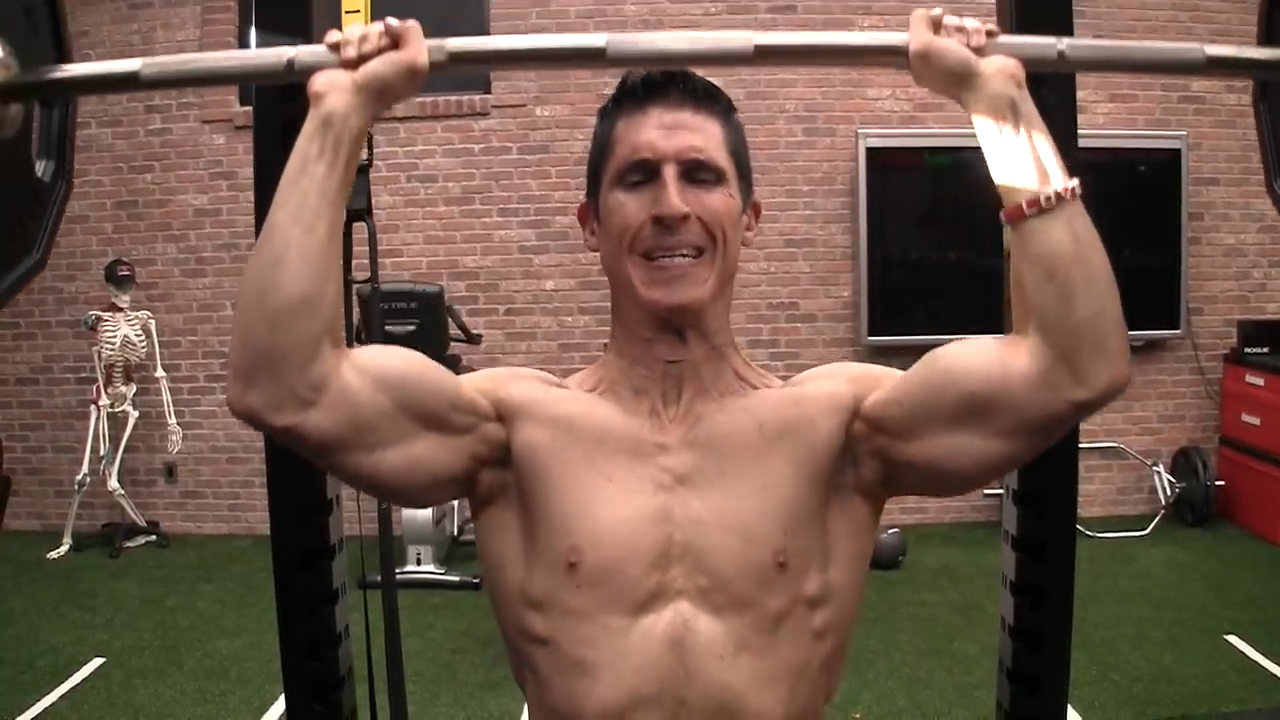
HOW TO DO THE BARBELL OVERHEAD PRESS:
- Start by setting up a barbell in a power rack at about chest height.
- Your feet should be shoulder-width apart for a solid, stable base. Grip the bar with an overhand grip just outside shoulder-width—this keeps your elbows in a strong position.
- Step back, brace your core and lats, and get ready to press.
- Now, as you drive the bar up, think about pushing through your feet, generating power from the ground up.
- Press the bar directly overhead, making sure your forearms stay vertical, and your head moves slightly forward as the bar clears.
- Control the weight on the way down—don’t just drop it—until it’s back to the starting position. That’s one rep.
WHAT MAKES IT EFFECTIVE: The Overhead Press is an effective compound movement because it engages multiple muscle groups, including the shoulders, triceps, core, and upper back, for full-body strength and stability.
PUSHING – HORIZONTAL: INCLINE BENCH PRESS

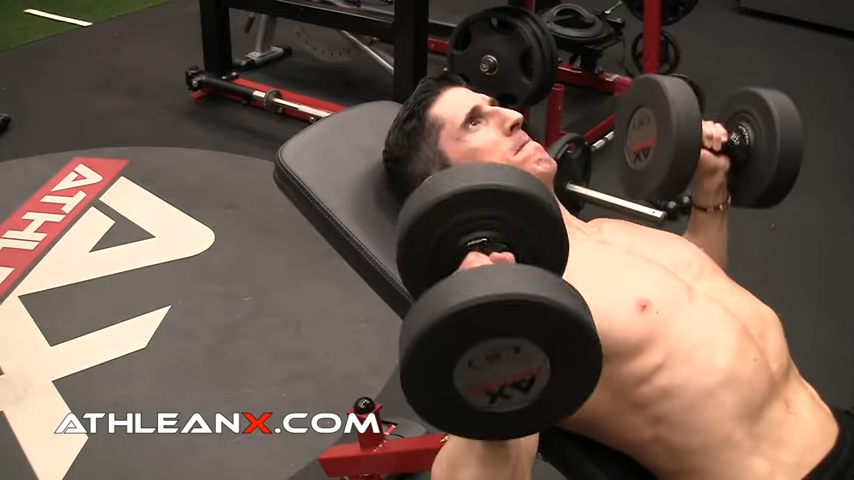
HOW TO DO THE INCLINE BENCH PRESS:
- First, set your bench to a 30-degree incline—this angle is key for hitting the upper chest.
- Grab a pair of dumbbells, plant your feet firmly on the ground, and get into position on the bench.
- Before you even press, engage your shoulder blades by pulling them back and down—this stabilizes your upper body and protects your shoulders.
- Now, press the dumbbells up with full control, focusing on your upper chest with a strong mind-muscle connection.
- Lower the weights slowly, keeping the tension on your pecs, and repeat for reps.
WHAT MAKES IT EFFECTIVE: The Incline Bench Press targets the often-underdeveloped upper chest, while engaging your shoulders and triceps for a complete upper-body workout.
PULLING – ROW: BARBELL ROW

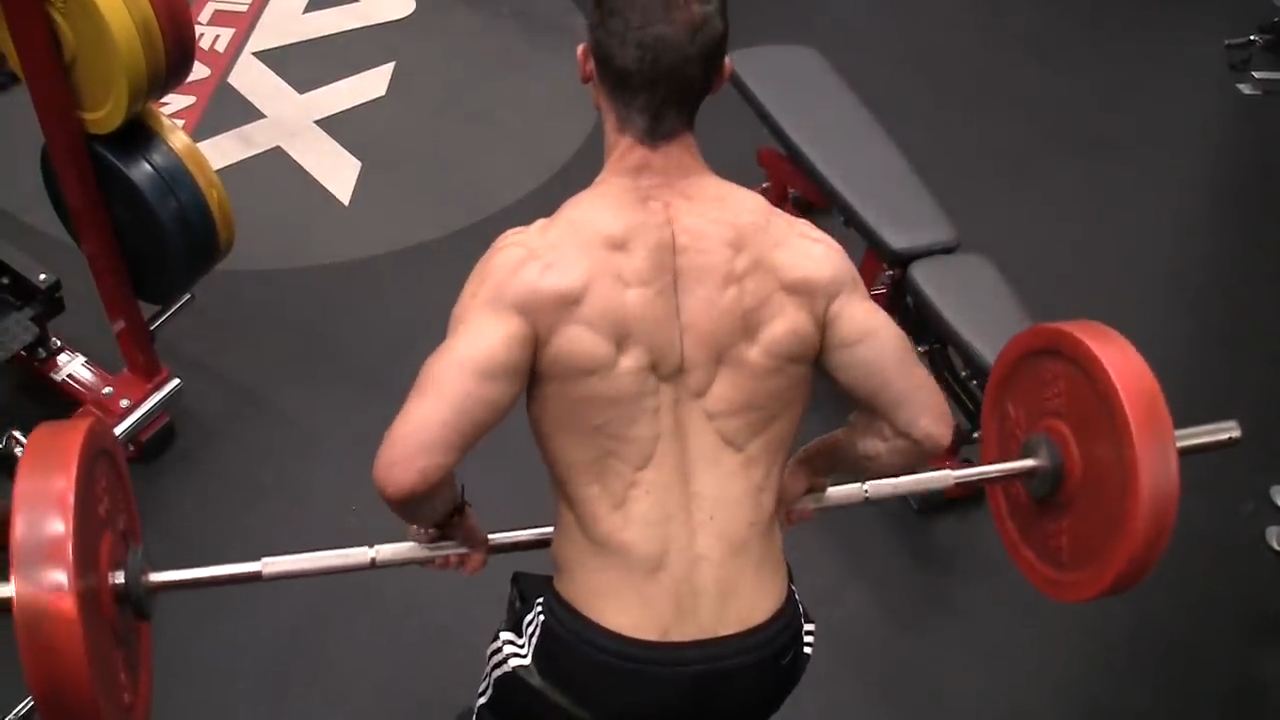
HOW TO DO THE BARBELL ROW:
- Start with your feet shoulder-width apart and the barbell in front of your shins.
- Hinge at the hips, keeping your back flat and chest up—this is crucial to protect your lower back.
- Grab the bar with a pronated grip. Before you pull, lock in your core, and squeeze your lats.
- Now, row the bar towards your lower chest, driving your elbows back while keeping them close to your body.
- Squeeze your shoulder blades together at the top, then lower the bar with control.
- Keep your form tight—no jerking or rounding your back.
WHAT MAKES IT EFFECTIVE: The barbell row is an excellent exercise for building back strength and muscle mass, improving posture and developing the forearms, low back, lats and glutes.
PULLING – VERTICAL: WEIGHTED CHIN-UP


HOW TO DO THE WEIGHTED CHIN UP:
- Start by grabbing a dip belt or a dumbbell between your feet—whatever adds resistance.
- Grip the bar with your palms facing you (supinated), about shoulder-width apart.
- Now, before you even pull, engage your lats and core by slightly depressing your shoulder blades.
- From there, drive your elbows down and pull your chest towards the bar, focusing on squeezing your biceps and lats at the top.
- Lower yourself with control, making sure you don’t let your body swing or lose tension. Rinse and repeat for muscular strength and size.
WHAT MAKES IT EFFECTIVE: Weighted Chin-Ups take an already powerful bodyweight exercise and supercharge it, targeting your lats, biceps, and upper back for serious muscle growth and maximal strength gains.
LOWER BODY – ANTERIOR CHAIN: SQUATS

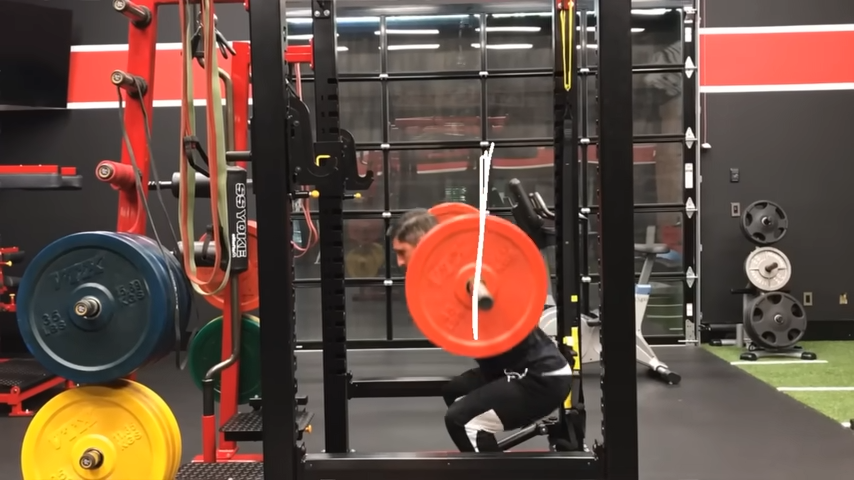
HOW TO DO SQUATS:
- First, get that barbell positioned right in the squat rack. It should be at a height where you can comfortably get under it without needing to tiptoe or bend awkwardly.
- Now, when you step under the bar, let it rest on your upper traps for a high-bar squat or across your rear deltoids for a low-bar squat.
- Don’t let it sit on your neck—you want a solid muscle shelf to hold the weight.
- Now that the bar is in place, get your feet shoulder-width apart with your toes pointed slightly out.
- Keep your entire foot planted—no rising up on the heels or the balls of your feet. This stance will give you a solid base of support.
- Keep your chest up and your head in a neutral position—not looking up at the ceiling or down at the floor, just straight ahead.
- As you lower yourself, let your knees track outwards, never caving in.
- Drop until your thighs are parallel to the ground or lower, and make sure your back stays straight with a slight forward angle.
- Elbows should stay tucked, helping you engage your traps and keep that bar steady.
WHAT MAKES IT EFFECTIVE: The Barbell Squat targets multiple muscle groups, including your quads, glutes, hamstrings, and core, making it the ultimate exercise for full-body strength and power development.
LOWER BODY – POSTERIOR CHAIN: DEADLIFTS


HOW TO DO THE DEADLIFT:
- Stand with your feet hip-width apart and grab the barbell with an overhand grip if you’re a beginner or use a hook grip for more advanced lifters. Your hands should be about one inch outside your feet.
- Before lifting, engage your core, pull your shoulder blades back, and keep your chest up. Your hips should be low but not too low—just enough to drive power.
- As you lift, press through your legs, keeping the barbell close to your shins.
- Once you reach knee level, engage your hips and lower back, driving your hips forward to bring the bar to hip height while staying upright.
- To lower the bar, reverse the hip hinge by bringing the bar to your knees, then bend your legs to place the bar back on the ground. Control every part of the movement, and don’t rush it—deadlifts require precision.
WHAT MAKES IT EFFECTIVE: The Barbell Deadlift engages nearly every major muscle group, from your glutes and hamstrings to your traps and core, making it one of the best exercises for total-body strength and muscle development.
If you’re focused only on strength, that’s great for building muscle and hitting weight gain goals, but don’t limit yourself by being one-dimensional.
To become one of the well-rounded athletes, you need to introduce accessory exercise training weights, bodyweight exercises, and even some aerobic activity to hit your full potential.
The real benefits of exercise come when you blend strength with agility, mobility, and endurance—unlocking optimal levels of performance that go beyond just looking strong.
Check out our ATHLEAN-X programs to see which is the best fit for your personal fitness goals and fitness level.

- Compound movements allow you to work several muscle groups at once, boosting overall strength and efficiency. These exercises create synergy in your training, leading to faster strength gains than isolation exercises.
- Unlike isolation moves, compound exercises train your body to work as a unit, enhancing not just strength but coordination and overall athletic ability.
- Compound lifts allow you to load more weight, stimulating more muscle fibers and leading to quicker strength improvements. This leads to a more powerful and athletic physique in less time.
- By training in multiple planes of motion—sagittal, frontal, and transverse—you avoid creating muscle imbalances and reduce the risk of injury. Incorporating lateral and rotational movements helps keep your body balanced.
- These movements are ideal for progressively increasing weight, reps, and intensity, which is key to driving consistent strength gains and muscle growth over time.
- Compound movements build functional, real-world strength that translates to athletic performance and everyday activities. You’re not just building muscle—you’re building strength that matters in real life.
- I recommend the following compound exercises for your training routine: Overhead Press, Incline Bench Press, Barbell Row, Weighted Chin-Up, Squats, and Deadlifts.
HOW TO GET STRONGER FAQS
It’s not about how much you train—it’s about how smart you train.
For strength development, you want to aim for 3-4 days per week of resistance training, focusing on compound exercises.
This gives you enough time to focus on classic strength training tools like barbells, dumbbells, and bodyweight exercises, while also leaving room for recovery.
Don't forget the importance of assistance movements to target weak points and ensure a well-rounded routine.
On off days, light aerobic exercise or active recovery like body weight training can keep your body moving without overloading your leg muscles and upper body muscles.
Remember, consistency beats overdoing it, so even if you have bad weeks, stick to your plan, stay consistent with your blocks of protein, and avoid burning out.
An average athlete might train 4-5 days per week, but it’s the quality of your exercise execution that counts.
There’s no “easy” way to get stronger, but there is a smart way.
The amounts of exercise will give you the most bang for your buck—think compound movements like Squats, Deadlifts, and Bench Presses—are the way to go.
These exercises hit multiple muscle groups, giving you a better blend of muscle size and strength in less time.
The keys are consistency, proper form, and gradual progression.
Don’t skip out on recovery, nutrition, or technique; these are just as important in your development of strength.
You won’t find shortcuts, but you will find results if you put in the work.
Can you get significantly stronger in just 7 days? Not really. But what you can do is lay the foundation.
Focus on compound movements with the right amounts of exercise, hitting key lifts like Squats, Deadlifts, and Pull-Ups to maximize your effort.
There’s no magic formula, but if you dial in your form, intensity, and recovery, you’ll notice improvements in how your body handles these exercises.
Remember, strength is built over time—don’t expect a divine body in a week but commit to consistency and you’ll start seeing differences in strength in no time.
You don’t need a gym to get stronger—bodyweight training exercises and minimal equipment can do the job right at home.
Focus on compound movements like Push-Ups, Pull-Ups, Squats, and Lunges to hit multiple muscle groups and build functional strength.
Want to step it up? Grab a set of resistance bands or dumbbells to add some extra challenge.
The key is consistency and progression, don’t just go through the motions.
Dial in your form, increase your intensity, and make every rep count.
With the right approach, you’ll be crushing your strength goals without ever leaving your house.
And remember, with current health topics pushing more people toward home workouts, it’s the perfect time to maximize your gains at home.
REFERENCES

Jeff Cavaliere M.S.P.T, CSCS
Jeff Cavaliere is a Physical Therapist, Strength Coach and creator of the ATHLEAN-X Training Programs and ATHLEAN-Rx Supplements. He has a Masters in Physical Therapy (MSPT) and has worked as Head Physical Therapist for the New York Mets, as well as training many elite professional athletes in Major League Baseball, NFL, MMA and professional wrestling. His programs produce “next level” achievements in muscle size, strength and performance for professional athletes and anyone looking to build a muscular athletic physique.

















